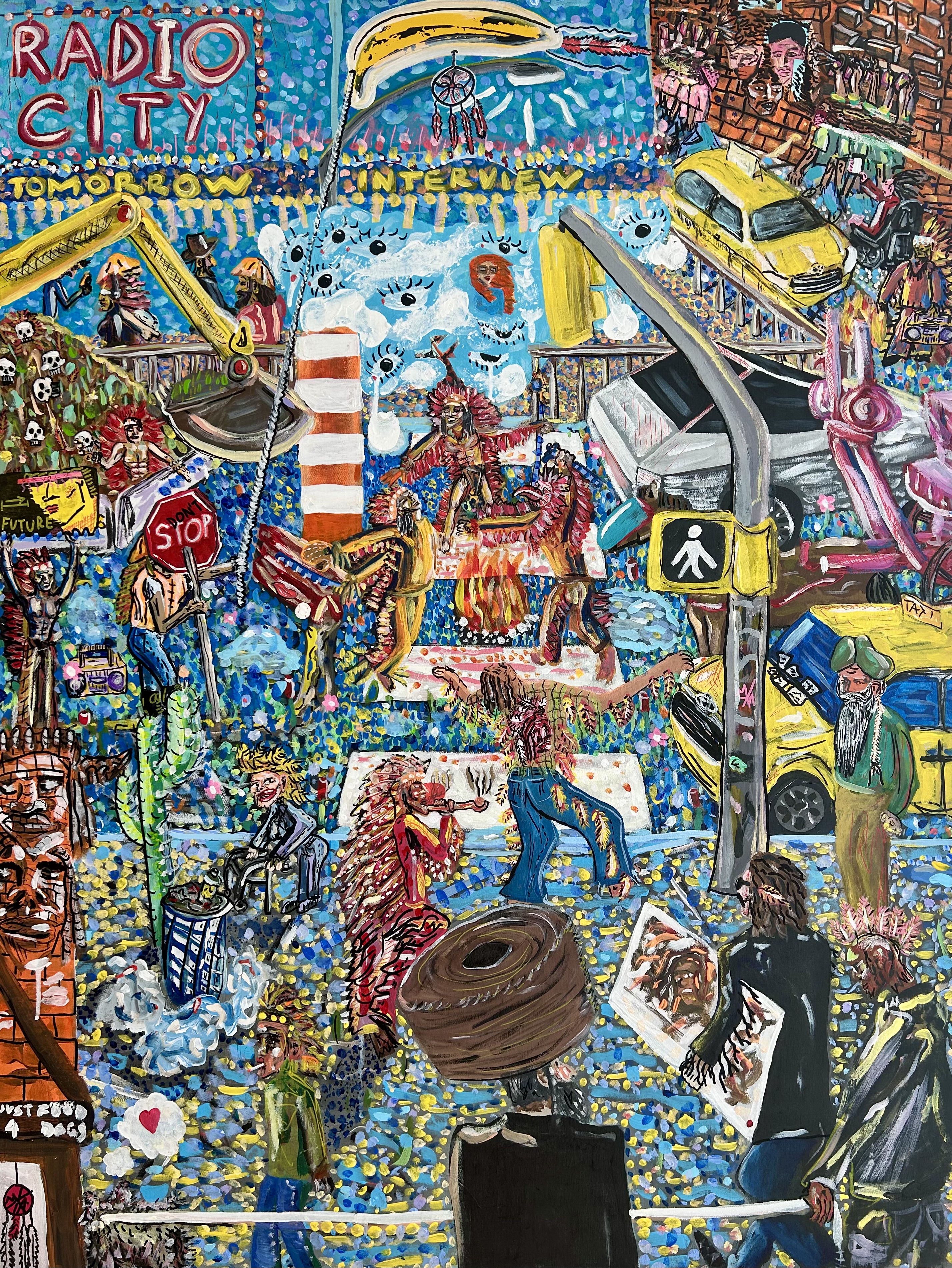
"La Pasión de los indios en Nueva York" by Top Kabana
Original piece
€2025.00
"La Pasión de los indios en Nueva York. Fictional view commemorating #standingrock" (122x92cm). Top Kabana. 2025. Acrylic on canvas. Original Piece.
The Passion of the Indians in New York. Fictional View commemorating #StandingRock is a work that transforms an ordinary Manhattan street corner into a vibrant sanctuary, where the ancestral rises from the city’s depths to reclaim presence, memory, and future. It all begins with the brutal gesture of an excavator: its blade doesn’t merely move earth, it unearths Indigenous human remains. A technical act becomes an incantation. As the artist writes, in New York, it is not flowers that bloom in spring, but excavators. They are the ones who release the forces once compacted beneath the asphalt.
From the cracks in the urban steam emerge tearful eyes, bodies in transit, and signs that oscillate between the sacred and the pop: a kite bearing Warhol’s banana and a dreamcatcher, hybrid symbols that avoid the American flag yet charge the scene with political tension. A red-haired woman evokes an intimate photograph, perhaps a memory, perhaps a premonition, while a sign reading “Future” rises as a cry and a promise of Indigenous continuity. Here, the Indians appear not only as protagonists of a cause, but as a metaphor for art itself: a bridge between the invisible, the pure, and the deeply authentic in a territory saturated with commerce and artifice.
At the bottom of the painting, urban and nearly dystopian scenes crowd together: a woman with a walker, a dog outside a gourmet pet restaurant, a rabbi, a man with a futuristic aesthetic, and a dancer in ecstasy beneath the ritual fire. All of them wear feathers. Not as ornaments, but as emblems. In this scene, each body becomes a bearer of ritual, of land, of freedom. Three vehicles, a horse with a diving helmet, a yellow cab, and a Cybertruck, trace the coordinates of a fractured timeline: the ancestral, the everyday, and the yet-to-come coexisting.
But this work is not merely an act of evocation. It is also an intimate logbook. Through the figures who dance, walk, or levitate, the artist recounts his own journey of sensory and spiritual detox since arriving in New York. The Indian levitating at the center is none other than his reconciled self: free, whole, emancipated. In that gesture of becoming-Indian, a personal, collective, and symbolic process, the work proposes art as a ritual of return, a space where everyone, Indigenous or not, carries a feather, because we have all, at some point, been touched by the memory that pulses beneath this ground.
